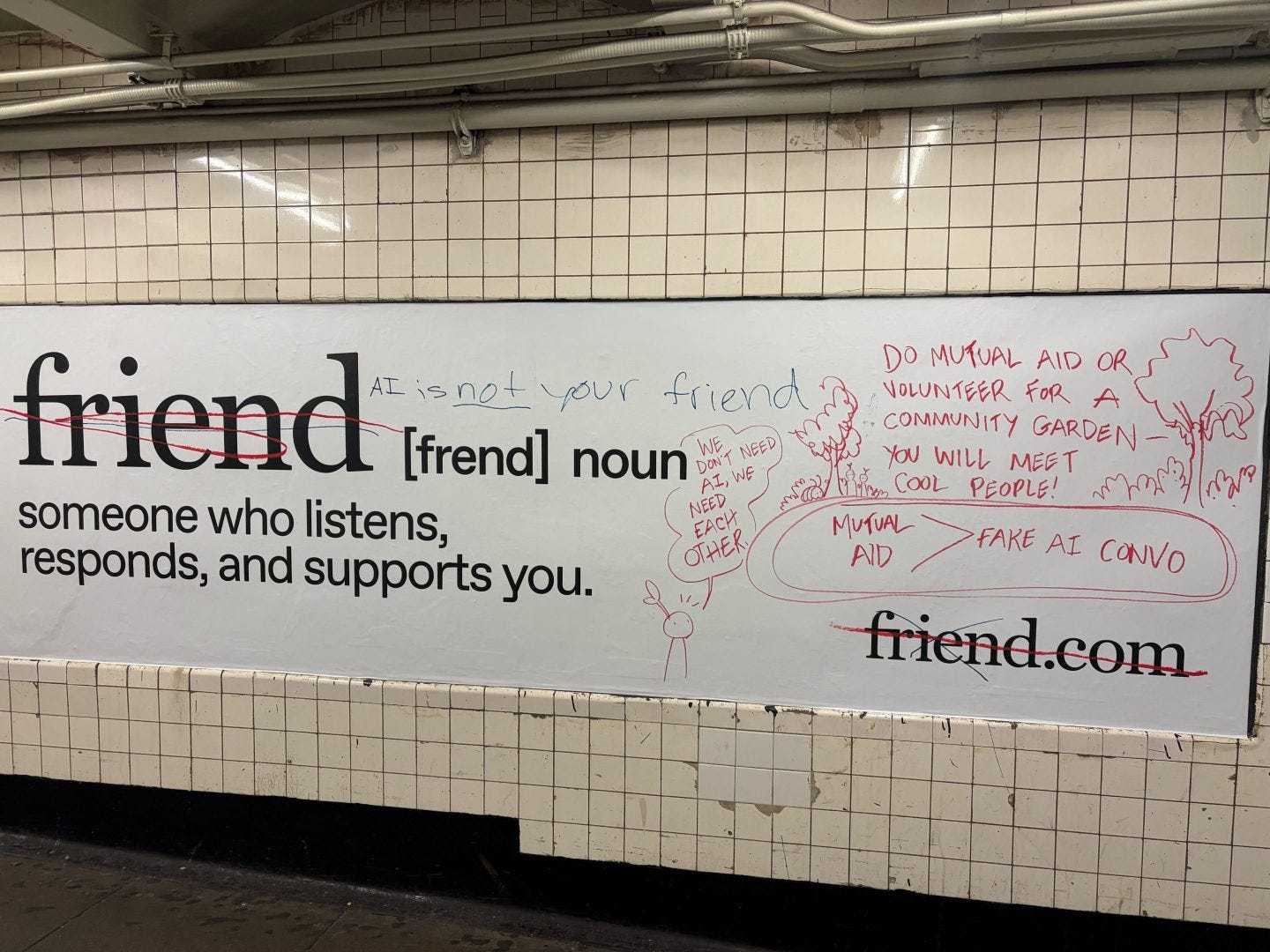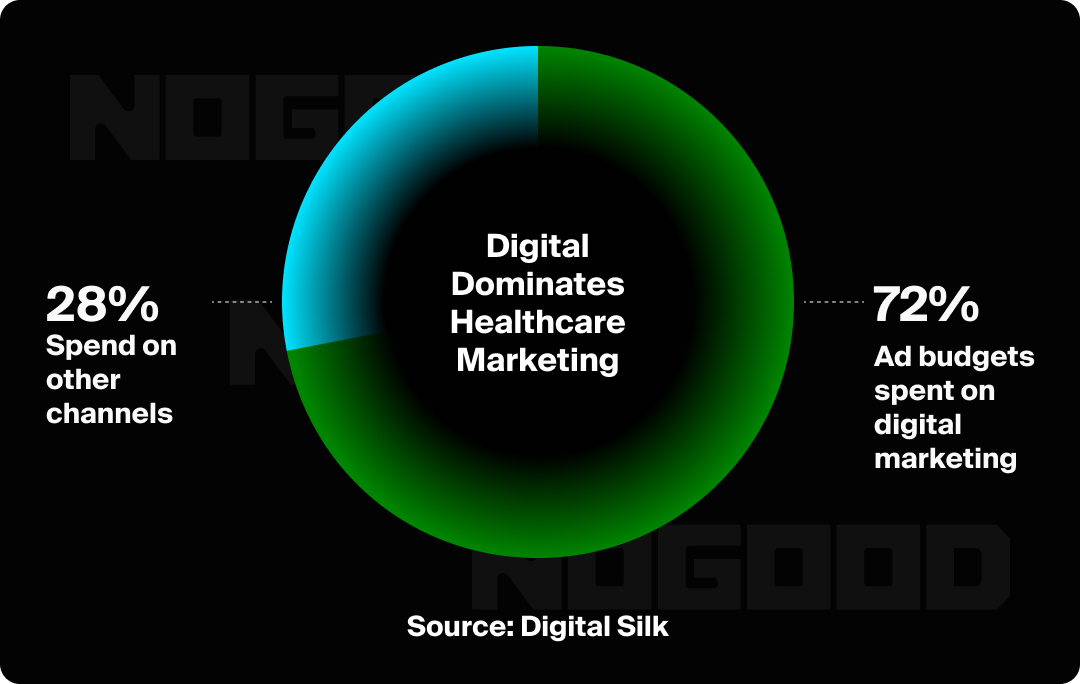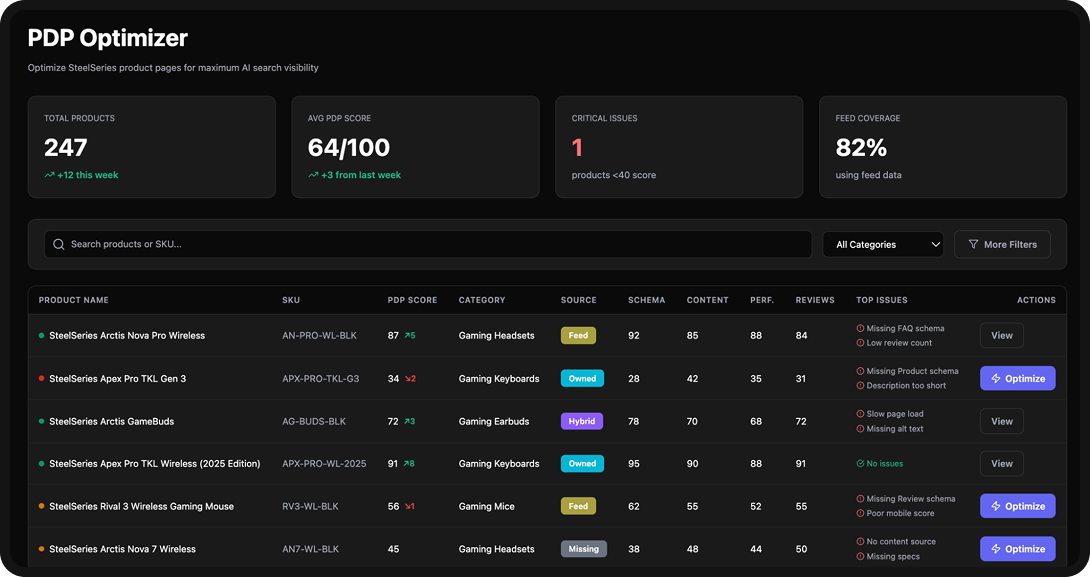Is this the most hated AI startup?
📰 NoGood News Vol. 104 | How Friend AI's CEO gambled all his money for one campaign
Hi NoGoodies,
Welcome to NoGood News, your bi-weekly pulse on all things growth. We break down successful brand campaigns, provide you with the best guides for all things growth marketing, and share emerging trends and insights to keep you ahead of the curve. Plus, exclusive interviews with some of the best in the game.
Here's a quick TL;DR of what's below:
How Friend AI became the most hated AI startup: The CEO of Friend AI spent his last millions on the biggest AI campaign to date. From subway ads to platform posters, he sparked rage among local New Yorkers… but that was his plan all along.
AI brands are tapping into pop-up culture: Claude launched a pop-up with Air Mail Weekly in NYC. Perplexity opened a cafe called Cafe Curious in Seoul. Is this the rise of AI brand activations?
AI implications in healthcare marketing: Healthcare marketing in 2025 looks different than it did five years ago, largely thanks to AI. But the question is, how quickly and effectively can you integrate it into your current strategy?
Ready? Let's get into it.
🚆 How Friend AI became the most hated AI startup
Learn about Friend AI’s marketing strategy
Would you spend your last million dollars on ads you know people will hate?
That’s exactly what the CEO of Friend AI just did.
Avi Schiffmann poured over $1M into NYC subway ads for his wearable AI startup.
With over 11,000 subway car cards, 1,000 platform posters, and 130 urban panels, this is the world’s first major AI campaign.
But instead of leading with function in his ads, he leaned into controversy.
So much that it sparked major public backlash both digitally and IRL.
The subway ads were extremely calculated:
👉 He designed the ads with extra white space to encourage graffiti.
👉 He picked New York for its polarized opinions on AI.
👉 He concentrated visibility at West 4th Street, knowing that’s where reactions would be the loudest.
As a result, New Yorkers responded by writing graffiti that said, “stop capitalizing on loneliness” and “get real friends.”
Meanwhile, OpenAI and Anthropic dropped campaigns that tapped into everyday moments and the human experience.
Schiffmann’s campaign highlighted the very split in AI marketing we’re witnessing: AI as the solution to human problems or AI creating new ones.
The common goal — make AI feel acceptable.
friend chose controversy over comfort while OpenAI and Anthropic chose to look past society’s existing tension with AI.
Either perspective isn’t necessarily “right” but the gap is clear.
We’re nowhere near understanding what AI’s role is in our lives and every brand building with AI has to pick a side.
What are your thoughts on the Friend AI campaign?
☕️ AI brands are tapping into pop-up culture
Read about the rise of AI brand activations
What if the next pop-up you go to isn’t from a beauty brand?
This is Claude’s first ever pop-up in NYC.
They collabed with Air Mail weekly, offering branded merch and coffee alongside a copy of their book, “Machines of Loving Grace.”
But just a few weeks ago, Perplexity AI opened Café Curious in Seoul – the first AI company to run its own coffee shop.
It looks like AI brands are pulling from the same playbook banks and luxury brands used.
Like Capital One Café and Ralph’s Coffee, they turned transactions into softer, more immersive brand experiences.
This tactic is a clear yet successful strategy: it bridges the gap between product innovation and human connection.
The AI brand space is saturated not only by quantity but by qualifications.
Everyone argues, “we’re better,” “we’re faster,” “we’re more efficient.”
But now, AI brands are rewriting the script through brand-led experimentation.
They’re making AI feel familiar by seamlessly weaving it into our daily routines (a quick coffee) without shoving demos in our faces.
Claude and Perplexity are the first ones to start this wave of “AI brand activations” and potentially, set the trend for others.
And since most LLMs function the same, the stories they tell, the spaces they build, and the customer identities they align with will be the true differentiators.
Whether that’s with a coffee shop or something more, AI brands are establishing their voice and making sure their customers feel it online and offline.
What are your thoughts on the rise of AI brand activations?
🏥 AI implications in healthcare marketing
Preparing for AI’s next wave in healthcare marketing
AI in healthcare marketing isn’t just about acquiring new users, it’s transforming the entire journey from Awareness > Engagement > Nurturing > Acquisition > Retention.
Optimize for AI Search & Digital Discovery: Answer engines and AI-powered platforms are becoming the new front door. Invest in Answer Engine Optimization (AEO) to own the brand narrative across answer engines.
Content Creation & Personalization at scale: Create blog posts, ad copy, social assets, and more in less time, with more relevance. Targeting user segments across funnel stages is now possible.
Drive Engagement: Intelligent Chatbots can handle FAQs to appointment bookings, they ensure real-time, contextual support that improves user experience and captures high-intent leads around the clock.
Use Predictive Analytics to Retain and Nurture: Predictive analytics helps stay proactive, reduce drop-offs, and increase lifetime value. Predictive AI can help you anticipate what users need before they ask, whether it’s a follow-up on a missed screening or a nudge toward a wellness check.
Protect Brand Trust: Regularly monitor user-generated content to catch brand-damaging conversations early and respond with empathy, and clarity.
ICYMI: Goodie quietly launched something big — an Agentic Commerce Optimizer that shows you exactly how AI shopping agents see your products (and why they might be recommending competitors instead). This tool helps you monitor your AI visibility, fix what’s broken, and prove the revenue impact. It’s worth a look if you’re in eCommerce.
🎙️ Q&A with an expert
A bi-weekly interview series with the best in the game
Q: How should healthcare marketers be thinking about AI search platforms versus traditional Google?
A: Healthcare marketers should see AI search platforms as the next evolution of brand discovery, not really a replacement for traditional Google. Visibility now depends on being part of the AI-generated answer so marketers must optimize for credibility and structured information, not just rankings or blue links. For brands with strong visibility/ awareness, organic traffic from traditional search will continue to follow naturally.
Q: What’s one AI capability in marketing that most healthcare organizations aren’t using yet but should be preparing for now?
A: Healthcare organizations should start preparing for next-best-action marketing, which can use AI to predict and guide the next right step in a patient’s journey. According to McKinsey, while 62% of healthcare leaders see AI having huge potential to improve consumer engagement and experience, only 29% have actually started using it, showing a big opportunity gap.
✍️ We wish we wrote this
Articles that caught our eye these past 2 weeks:
👀 Keeping up on the socials
Because IYKYK is better than FOMO:
Did Gap inspire the next wave of branded storytelling?
Sephora just declared war on TikTok Shop
This ad tricks you into liking AI
🚀 Ready to meet your NoGood partner?
Tell us where you are and where you want to be — and we’ll help get you there.






